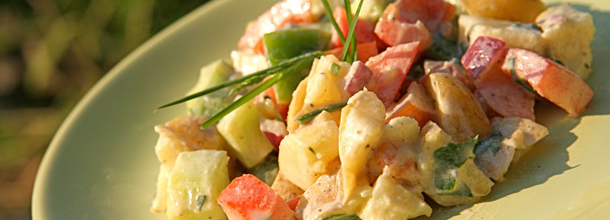
Food-borne Illness Prevention. Which Foods and How.
Doctors see an increase of food-related illness this sweltering time of year.
According to the Centers for Disease Control, one and six Americans will become ill with a foodborne illness. The CDC divides foodborne illnesses into known pathogens, such as E.coli, salmonella, norovirus, and campylobacter, and unspecified agents, which may include chemicals in food “whose ability to cause illness is unproven.”
These numbers spike in the summer. According to the USDA Food Safety and Inspection Service (FSIS), foodborne illness is heightened thanks to bacteria and microorganisms present, which flourish in the warmth of summer.
Also, people cook and eat outdoors where it is easier for food and utensils to become contaminated with harmful microorganisms. In 2009, the Centers for Science in the Public Interest released a report listing the danger foods:
- Salad fixings: Leafy greens and green onions
- Eggs
- Tuna fish made with mayonnaise
- Raw Oysters
- Potatoes
- Cheeses
- Ice Cream
- Tomatoes
- Sprouts
- Berries
- Mayonnaise and salad dressing
- Milk
Our concierge care doctors recommend that eating healthy and adequate rest are the cornerstone of your immunity, which is your best defense against foodborne pathogens.
You must be vigilant in how you store foods. Temperature: The proper temperature crucial, as you should refrigerate foods immediately after serving, keeping cold foods cool. If you are camping, pack foods in an insulated cooler with ice packs, and out of direct sunlight.
Leftovers should be tossed if left out over one hour (for outdoor servings). Make sure all veggies are cleaned before you pack for the picnic.
Cleanliness: Outdoor eating requires a gameplan on the go. Use disposable antibacterial wipes and keep hand sanitizer at the ready. You should wipe down all surfaces before preparing or serving food from them. Separate fruits and vegetables from animal proteins, and store everything in airtight containers. If you do eat animal protein, cut it on a separate cutting board from fruits and vegetables.
You can visit FoodSafety.gov to see their Safe Minimum Cooking Temperatures chart. Use an instant read thermometer to ensure you are cooking your animal protein to the appropriate temperature.
…
Source(s)
I. http://www.fsis.usda.gov/factsheets/foodborne_illness_peaks_in_summer/index.asp
About SignatureMD
SignatureMD is one of the nation’s largest firms providing initial conversion and ongoing support services to concierge medicine physicians. SignatureMD currently partners with over 200 affiliated primary care physicians and specialists across 35 states, and its network is rapidly expanding.